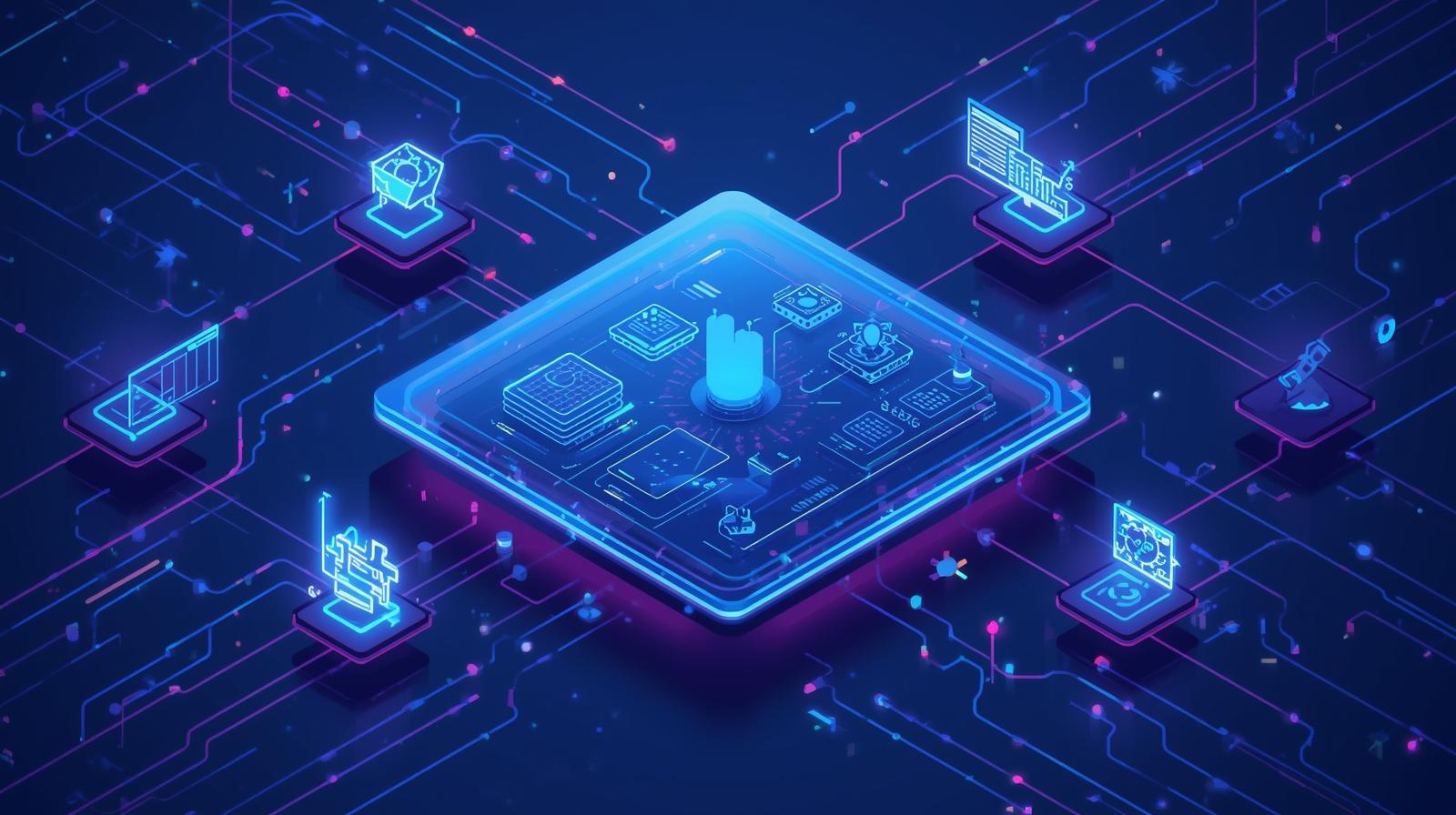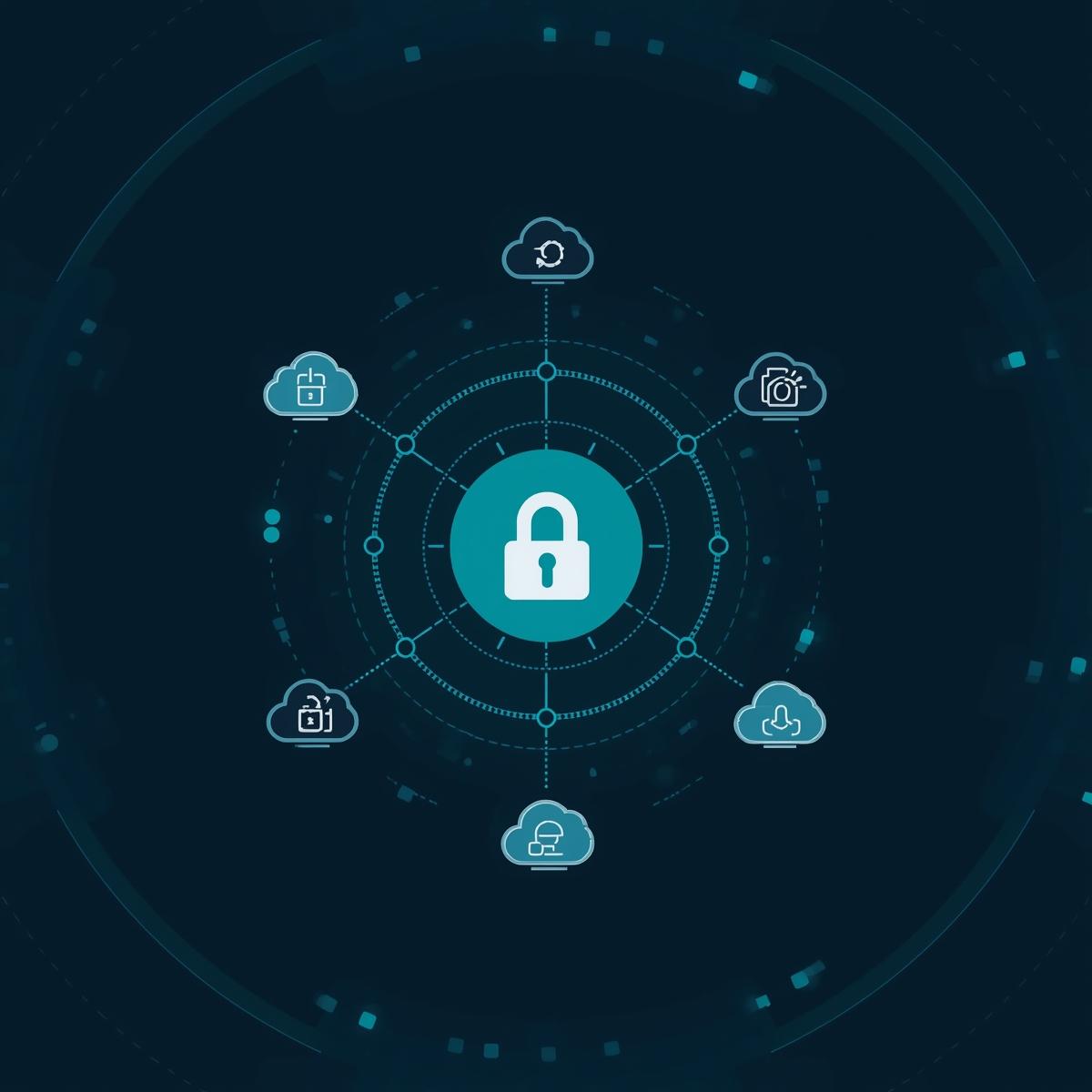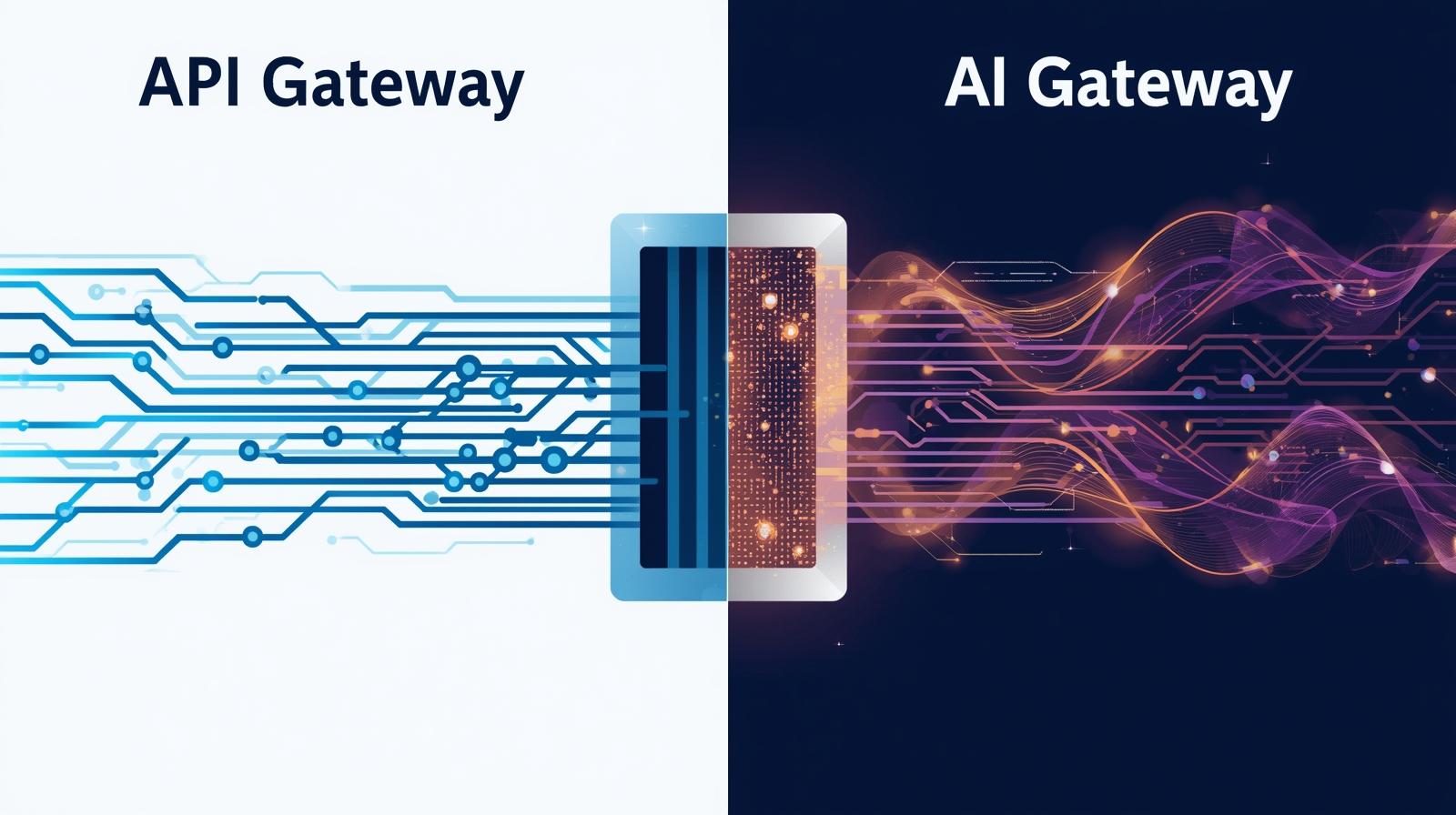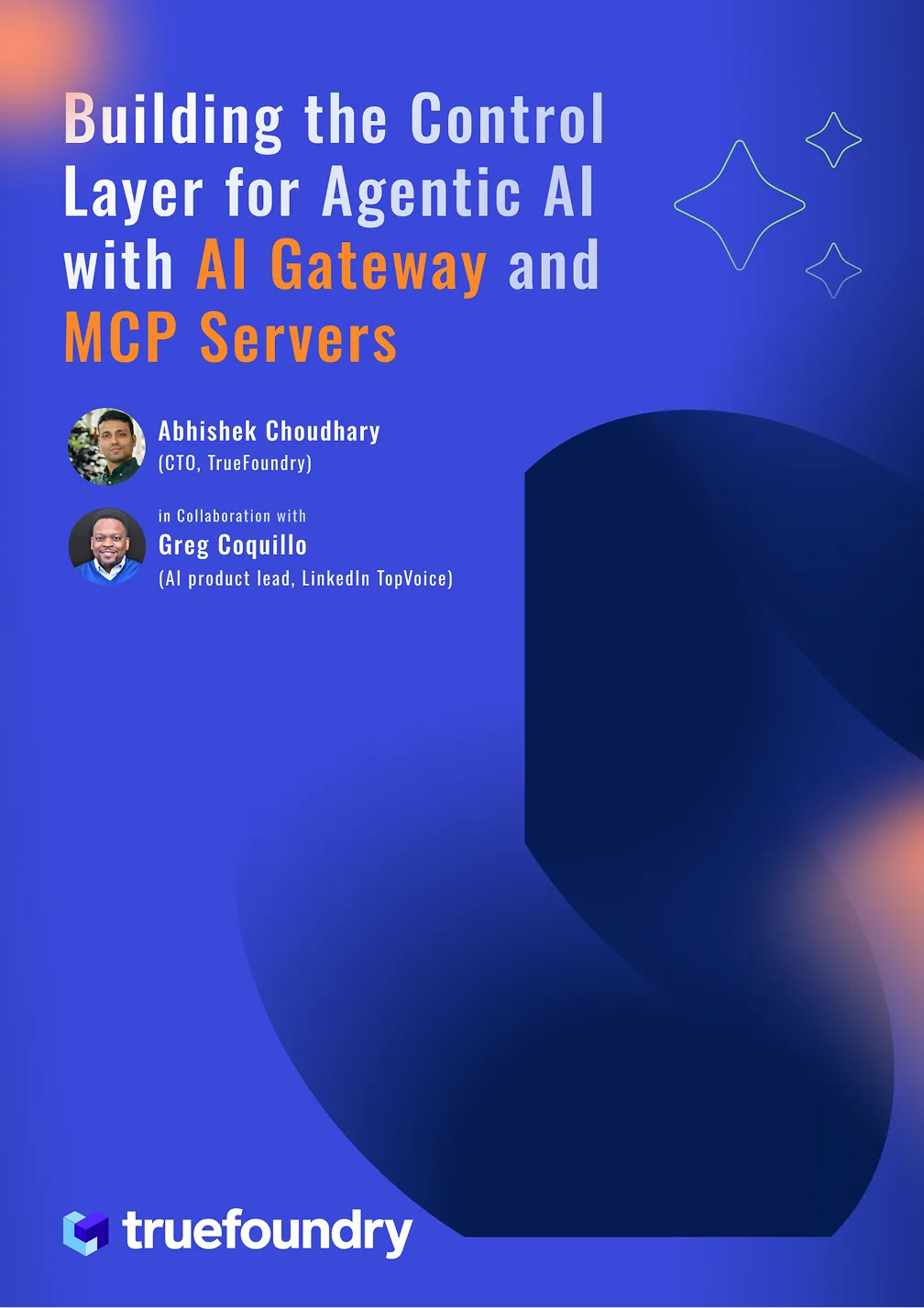What Are Multi-Agent Systems?
As AI systems grow in complexity, single-agent architectures often fall short in handling dynamic, distributed tasks. Enter Multi-Agent Systems (MAS), a paradigm where multiple autonomous agents work collaboratively or competitively within a shared environment. These agents can plan, communicate, learn, and adapt in real-time, enabling intelligent coordination at scale. MAS is already powering next-gen applications in robotics, logistics, gaming, and LLM-based workflows. From decentralized decision-making to emergent behavior, MAS offers a scalable blueprint for building robust, modular AI ecosystems. This blog explores their architecture, benefits, and how to deploy them effectively using platforms like TrueFoundry.
What are Multi-Agent Systems?
A Multi-Agent System (MAS) is a system composed of multiple intelligent agents that interact within a shared environment. Each agent operates autonomously, perceiving its surroundings, making decisions, and taking actions to achieve its goals. What distinguishes MAS from single-agent systems is the dynamic interaction among agents, whether cooperative, competitive, or neutral.
Agents in a MAS can represent different roles: some may collect data, others may make decisions, and others may execute tasks. These agents can be homogeneous (identical in capabilities and roles) or heterogeneous (specialized with distinct functions). The system’s intelligence arises not just from individual agents but from their interactions, enabled through well-defined communication protocols and coordination mechanisms.
MAS is particularly effective in distributed, complex, and uncertain environments. For example, in warehouse robotics, multiple agents (robots) navigate and collaborate to optimize picking routes. In finance, trading agents operate with limited visibility and must adapt to other agents' actions in real-time.
From a design perspective, MAS incorporates principles from game theory, distributed AI, and control systems. Each agent may have its own goal model, belief system, and perception-action loop. Some systems allow agents to share partial information, negotiate, or even compete for limited resources.
The rise of LLM-based agent frameworks like LangGraph, AutoGPT, and CrewAI has pushed MAS into the mainstream. These systems allow agents to communicate via natural language, access shared tools, and coordinate complex workflows such as data analysis, customer support, or content generation.
In essence, a Multi-Agent System is not just a collection of bots—it’s a coordinated system of autonomous entities that collectively solve problems too complex for any one agent to handle alone.
Key Features and Core Design Patterns
Multi-agent systems (MAS) exhibit a unique combination of architectural features and interaction patterns that enable autonomous, distributed intelligence. At its core, MAS relies on five foundational capabilities:
Autonomy: Each agent operates without centralized control. It perceives its environment, updates its internal state, and takes actions independently, making MAS naturally scalable and fault-tolerant.
Communication: Agents must share information to coordinate tasks. This is achieved through direct message passing (e.g., JSON over HTTP, WebSocket) or shared memory models. More advanced MAS may use formal languages like FIPA-ACL or natural language via LLMs to negotiate or synchronize.
Coordination: To prevent redundant or conflicting actions, MAS implements coordination patterns like leader election, token passing, auction-based task allocation, or decentralized consensus protocols (e.g., Raft, Paxos). These enable effective resource-sharing and joint decision-making.
Adaptation and Learning: Many MASs integrate reinforcement learning or evolutionary algorithms to allow agents to adapt based on feedback. In dynamic environments, agents update strategies in response to other agents' behaviors, enabling emergent collaboration or competition.
Distributed Perception and Decision-Making: Unlike centralized systems, MAS agents may have only partial knowledge of the global state. They act on local observations and shared context, making collective problem-solving possible without a single point of failure.
These features enable several design patterns in MAS architecture:
- Hierarchical MAS: Supervisor and worker agents with role-based control.
- Swarm-based MAS: Homogeneous agents using local rules to create emergent behavior.
- Microservice-style MAS: Agents packaged as isolated services with well-defined APIs for tool use and orchestration.
Together, these patterns make MAS ideal for building modular, composable systems, whether for robotic fleets, autonomous customer service, or collaborative LLM-based workflows.
Single-Agent vs. Multi-Agent Systems
Understanding the distinction between single-agent and multi-agent systems is critical for architecting scalable AI solutions. While both involve intelligent decision-making components, they differ significantly in complexity, scope, and operational design.
Centralized vs. Distributed Control
A single-agent system operates with a centralized control loop: one agent perceives the environment, reasons for it, and acts. This is suitable for tightly scoped problems with full environmental observability, such as rule-based automation, single-user chatbots, or standalone recommender systems.
In contrast, multi-agent systems (MAS) involve decentralized control. Each agent maintains partial awareness and independently interacts with its environment and other agents. MAS are ideal for large-scale, dynamic environments where tasks must be distributed, e.g., autonomous delivery fleets, multi-drone coordination, or collaborative AI assistants.
Observability and Knowledge Sharing
Single-agent systems typically assume global observability or a fully accessible state space. The agent makes decisions with a complete view.
MAS agents often work with incomplete or local information. One agent’s decision may depend on inferred behavior or communicated signals from others. This introduces complexity, but also realism, especially in environments where state information is distributed or costly to access (e.g., supply chain nodes or peer-to-peer networks).
Coordination Complexity
A single agent does not need to coordinate with others; its optimization problem is self-contained. But in MAS, coordination is central: agents must negotiate, synchronize, or avoid conflict.
This introduces coordination mechanisms such as:
- Task allocation (auction, voting, contract net)
- Consensus (for shared planning)
- Conflict resolution (e.g., in overlapping task domains)
These are crucial when designing agents that must act without interfering with or duplicating efforts.
Scalability and Fault Tolerance
Single-agent systems often struggle to scale or adapt in real time when handling diverse tasks. A failure in the agent may mean complete system failure. MAS offers scalability through parallelism. More agents can be added to handle the increasing load. They also provide fault tolerance; if one agent fails, others can adapt or recover without collapsing the system.
In summary, single-agent systems are simpler but limited in capability and scope. Multi-agent systems, while more complex to design and manage, unlock coordinated intelligence and resilience, crucial for real-world, distributed, and autonomous AI applications.
Benefits of Multi-Agent Systems
Multi-agent systems (MAS) are increasingly adopted across domains because they offer architectural and operational advantages that traditional single-agent or monolithic systems cannot match. Below are key benefits that make MAS ideal for building scalable, resilient, and intelligent AI systems.
Scalability Through Distributed Processing
In MAS, tasks are naturally decomposed and distributed across multiple agents. Each agent can operate in parallel, allowing the system to scale horizontally. Whether you're orchestrating a fleet of autonomous vehicles or running thousands of LLM-powered agents across workflows, MAS enables efficient workload distribution without overloading a single decision-maker.
Robustness and Fault Tolerance
MAS is inherently robust. Since each agent is autonomous, the failure of one agent does not necessarily compromise the system. For instance, in a warehouse setting, if a robot malfunctions, others can dynamically reassign its task or reroute workflows. This redundancy ensures higher uptime and resilience in production-grade systems.
Decentralized Decision-Making
By design, MAS eliminates the need for centralized decision-making. This makes them highly suitable for environments where gthe lobal state is hard to obtain or where real-time responsiveness is critical. For example, in financial trading systems, agents operate with local views and still achieve market-wide equilibrium through decentralized interactions.
Emergent Intelligence and Specialization
When multiple agents interact over time, they often develop specialized roles or strategies, even without explicit programming. This emergent behavior can lead to more efficient problem-solving. For example, in Multi-Agent Reinforcement Learning (MARL), agents in a competitive game may learn to form alliances, strategize, or cover blind spots cooperatively.
Reusability and Modularity
MAS encourages modular architecture. Agents can be developed as loosely coupled components with defined APIs. This makes it easier to update, test, or replace individual agents without affecting the entire system. Such modularity aligns well with microservices and containerized deployment strategies in modern cloud-native environments.
Better Alignment with Real-World Systems
Many real-world systems, transportation networks, e-commerce platforms, and healthcare ecosystems are inherently distributed and involve multiple actors. MAS mirrors this structure, making them conceptually and operationally a natural fit for simulating and managing such environments.
Collectively, these benefits make MAS not only technically appealing but also practically essential for next-generation AI systems that require scalability, resilience, and intelligent coordination.
Designing and Architecting Multi-Agent Systems
Designing an effective Multi-Agent System (MAS) requires careful consideration of how agents will operate, interact, and evolve within a shared environment. The architecture must support autonomy, communication, coordination, and scalability while maintaining modularity and fault tolerance.
Agent Types and Roles
Start by defining agent roles based on task specialization:
- Reactive agents respond immediately to stimuli without internal modeling.
- Deliberative agents plan and reason about the environment before acting.
- Hybrid agents combine both behaviors, using layered or modular architectures.
Role-based design helps in building functional diversity: planner agents, executor agents, critics, retrievers, or interface agents. This pattern is especially useful in LLM-based MAS, where each agent may have a tool-specific responsibility.
Communication and Protocols
Communication is foundational in MAS. Agents may communicate via:
- Message queues (e.g., RabbitMQ, Kafka) for decoupled async messaging.
- APIs/Webhooks for REST-based or event-driven exchanges.
- Shared memory stores like Redis for low-latency blackboard systems.
You may also use formal communication languages like FIPA-ACL or adopt natural language for LLM agents via prompt templates and semantic routing.
System Architectures
Common MAS architectures include:
- Flat (Peer-to-Peer): All agents are equal; coordination is emergent.
- Hierarchical: Supervisor agents manage or delegate to sub-agents (ideal for planning and reflection loops).
- Microservice-style: Agents are deployed as isolated, containerized services with API contracts, making them independently scalable and maintainable.
Memory and Context Management
To maintain coherence across agents, consider shared vector stores, memory chains, or event logs. Use LangGraph or custom DAG-based schedulers to model dependencies and execution flows between agents. A well-architected MAS aligns autonomy with structure, enabling flexibility while preserving control across a distributed intelligent system.
Deploying and Managing Multi-Agent Systems with TrueFoundry
TrueFoundry provides a robust, Kubernetes-native platform to deploy and manage Multi-Agent Systems (MAS) without the typical infrastructure overhead. Its architecture is optimized for scalable AI applications, making it a strong fit for running modular, agent-based systems in production.

At the core of TrueFoundry’s architecture is a split-plane design. The control plane, either hosted or self-managed, handles deployment orchestration, observability, and UI/API-level operations. Meanwhile, the compute plane, where the agents actually run, remains entirely within your infrastructure. These planes communicate securely via tfy-agent, which connects over encrypted WebSocket channels, eliminating the need to expose public endpoints.
MAS typically consists of multiple services, each representing a distinct agent, orchestrated workflows involving chains of agents. TrueFoundry supports both paradigms. Agent services (like those built with FastAPI or LangChain) can be deployed using simple YAML manifests, with the platform handling container builds, service provisioning, and autoscaling. For more complex agent interactions, TrueFoundry integrates a Flyte-based workflow engine, allowing developers to define multi-agent execution graphs using Python decorators. This is particularly powerful when modeling coordination logic, retries, or conditional handoffs between agents.

Observability is a major strength of TrueFoundry. It comes pre-integrated with OpenTelemetry-based tracing, enabling full visibility into agent workflows. Developers can trace decisions, tool calls, inter-agent messages, and failures in real-time using the platform’s Tracing UI. This is invaluable for debugging and optimizing agent behavior, especially in systems built using frameworks like CrewAI or LangGraph.
Deployment reliability is handled through native support for autoscaling, rollout strategies like blue-green or canary deployments, and asynchronous job queues. The platform also includes an image builder service that automatically optimizes and pushes Docker containers, streamlining CI/CD for agent services.

Security is enterprise-ready. Role-based access control (RBAC) is enforced at multiple levels: tenant, workspace, cluster, and agent. Data sovereignty is preserved since all computing runs in your environment, and TrueFoundry supports air-gapped setups for sensitive applications.
In short, TrueFoundry abstracts away the complexity of deploying and scaling MAS by combining infrastructure automation with deep observability, robust orchestration, and secure deployment, all while staying Kubernetes-native and LLM-friendly.
Operational & Architectural Best Practices
Building a Multi-Agent System (MAS) is not just about designing intelligent agents; it’s about ensuring they operate reliably, scale efficiently, and can evolve over time. Below are key best practices to follow when developing production-grade MAS.
First, adopt modular and loosely coupled agent designs. Each agent should have a well-defined role and interface, ideally exposed via APIs or message queues. This modularity allows you to scale agents independently, test them in isolation, and replace or upgrade them without affecting the entire system.
Implement durable execution and checkpointing wherever agents perform long-running or critical tasks. By maintaining execution states and partial results, agents can recover from failures without restarting the entire workflow. Frameworks like LangGraph or Flyte (used within TrueFoundry) can help manage these stateful workflows.
Context management is another critical area. In LLM-based MAS, context windows are limited, so use techniques like prompt compression, memory summarization, and context chaining to keep agents aligned during long interactions. Shared memory stores (e.g., Redis or vector databases) can help agents track state and history across sessions.
When multiple agents interact, ensure robust coordination protocols. Use mechanisms like contract-net for task bidding, leader election for role delegation, and timeouts for fail-safe behavior. For asynchronous operations, implement retries and fallback strategies to prevent deadlocks or cascading failures.
From an observability standpoint, integrate telemetry and tracing early in development. Capturing inter-agent messages, execution spans, and errors in context is essential for debugging and optimization. Tools like OpenTelemetry, which TrueFoundry supports natively, enable end-to-end visibility across complex agent workflows.
Finally, enforce RBAC and sandboxing to isolate agents, especially when dealing with untrusted inputs, third-party APIs, or external tools. Security and governance should be treated as first-class citizens from day one.
Conclusion
Multi-agent systems offer a powerful framework for building scalable, intelligent, and distributed AI applications. By combining autonomous agents with coordinated workflows, MAS can handle real-world complexity in ways that single-agent systems cannot. From modular architecture to adaptive behavior, they enable robust problem-solving across domains like robotics, finance, and generative AI. With platforms like TrueFoundry, deploying and managing MAS at scale becomes seamless, offering built-in observability, security, and orchestration. As AI systems become more agentic and interconnected, mastering MAS design and operations will be essential for building the next generation of intelligent infrastructure.
Frequently Asked Questions (FAQs)
1. What is the difference between a Multi-Agent System and a distributed system?
While both involve multiple components, MAS focuses on autonomous decision-making agents interacting to solve tasks, whereas distributed systems focus on computational resource sharing and coordination without autonomous behavior.
2. Can I use LLMs like GPT-4 within Multi-Agent Systems?
Yes. LLMs can serve as reasoning agents, planners, or tool users within MAS. Frameworks like LangGraph and CrewAI support LLM orchestration across multiple agents with shared memory and tools.
3. How do agents communicate in a MAS?
Agents may communicate via direct messaging (e.g., HTTP, gRPC), shared memory stores, or queues. Some use formal Agent Communication Languages (ACL), while LLM agents often communicate via structured natural language prompts.
4. What are some real-world applications of MAS?
MAS is used in robotics (drone swarms), finance (trading bots), logistics (warehouse automation), simulations (multi-agent reinforcement learning), and generative AI workflows (content agents, research assistants).
5. How does TrueFoundry help with MAS deployment?
TrueFoundry abstracts Kubernetes complexity and offers secure deployment, autoscaling, workflow orchestration, and end-to-end tracing, making it ideal for managing modular MAS services and agent pipelines at scale.
Built for Speed: ~10ms Latency, Even Under Load
Blazingly fast way to build, track and deploy your models!
- Handles 350+ RPS on just 1 vCPU — no tuning needed
- Production-ready with full enterprise support
TrueFoundry AI Gateway delivers ~3–4 ms latency, handles 350+ RPS on 1 vCPU, scales horizontally with ease, and is production-ready, while LiteLLM suffers from high latency, struggles beyond moderate RPS, lacks built-in scaling, and is best for light or prototype workloads.


















